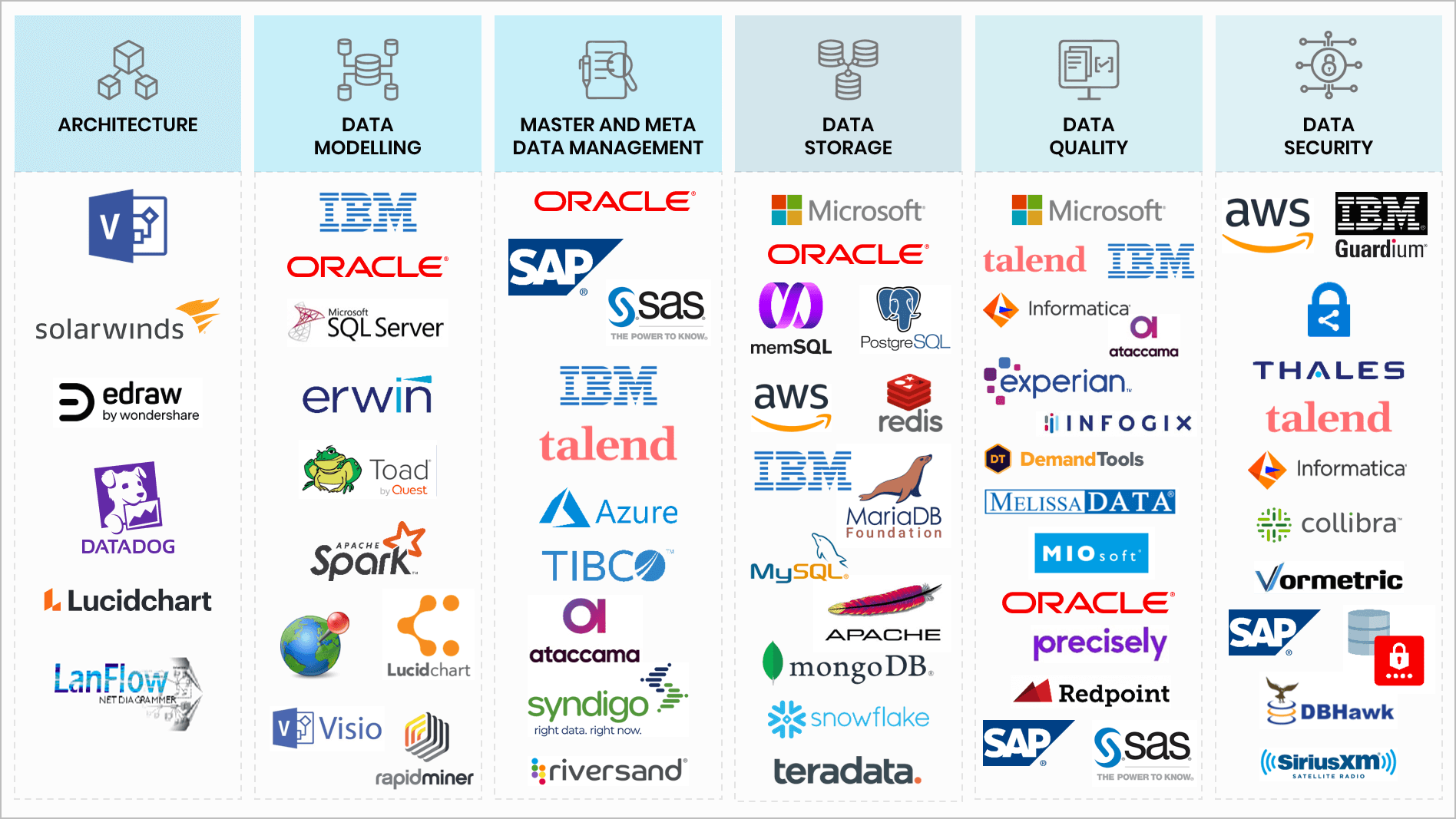What is Data Governance?
Data governance represents the policies and procedures that ensure data is available, usable, is clean and accurate, and that security is maintained across front, middle, and back-office functions.
Effective data governance is mission critical for organizations looking to ensure their historical data remains accurate so that it can implement key business decisions, optimize operational efficiency, innovate new products and services, and improve ROI and revenue.
Ensuring that your organization implements an effective data governance strategy can be a complex and confusing task. You will need the right team with an understanding of data privacy regulations, a roadmap to achieve desired business outcomes and, with a recent rise in software supply chain attacks, you will need a data governance strategy that offers 24/7/365 protection.

80% of Industry Digital Champions are investing in data governance capabilities for a strong, scalable foundation before integrating data or building advanced analytics capabilities.
Typically, data governance departments are handled by a governance manager, governance committee and a team of data stewards and custodians.
Data governance manager
Responsible for the overall strategic guidance of the data governance framework.
Data governance committee
Takes care of the prioritization for the initiatives, approval of organization-wide data policies and standards, as well as providing ongoing awareness training of the program.
Data stewards
Oversee the management of data and metadata, ensuring the policies and rules approved by the committee are implemented and that end users comply with standards and policies.
Data custodians
Handle a variety of functions across multiple departments such as data architecture, modeling, analyzing, engineering, and quality assurance.
In practice, different companies have different hierarchies; some are run by chief data officers, some positions use separate job titles, sometimes roles overlap. We seldom see a one-size-fits-all organizational structure for governance departments.
An effective data governance strategy, at its core, breaks down data silos across an organization and ensures consistency for data compatibility, security, auditing policy, and accuracy in business intelligence. Additionally, a governance department's goal is to ensure the data the team manages and regulates is used properly, both to avoid business errors and block potential misuse of sensitive data.
Setting up effective data governance requires cross-functional organizational effort and resources. There are many moving parts, and often business and IT have different ideas about how data should be managed and regulated. Compliance, as one example, is a hot topic in data governance today.
A robust data governance strategy ensures compliance with critical regulatory policies such as the General Data Protection Regulation (GDPR) and the California Consumer Privacy Act (CPPA).

How Do I Create an Effective Data Governance Strategy?
It is important for your organization to first recognize data governance adoption as a valued and strategic enterprise asset that needs to be clearly defined and enforced. This will ensure that all data is managed to correctly follow internal and external rules and regulations, as well as maintained effectively across the entire data life cycle. There are three steps to building an effective data governance strategy:
Create a Clear Roadmap
The data governance strategy should start with an initial assessment of the current state of data management, roles and responsibilities, and data-related problems. This operational assessment will help your business to better position your roadmap to identify areas for improvement and a plan for achieving an effective digital transformation.
As mentioned before, broad organizational changes are often meet with resistance. Therefore, it is important to clearly define the assessment and give a complete picture of the initiatives to keep business and IT on the same page. Also, be sure to set up routine training seminars with your governance committee to anticipate questions and concerns, such as:
- What metrics will be used to gauge potential threats?
- Is our organization prepared for a data breach?
- How will our efforts optimize bottom line?
Build an Effective Governance Department
While there are many ways to set up the structure of your data governance department, it is important for your roadmap to clearly define the roles of each one of its members to manage organizational conflict. This involves positioning your managers, committee, stewards, and custodians at the right hierarchies to create as little overlap as possible.
A good data governance department should be thought of and run like a well-oiled machine. This will help to keep all moving parts in-line so that the department is focused on what we will cover in step three.
Develop an Effective Policy
An effective data governance policy defines the guidelines for ensuring the proper governance of an organization's data. The framework that makes up your policy should encompass the following points:
- Start with the principles you will base your policy around. This will be fundamental to how you manage data in your organization.
- If applicable, assess the state of your current governance within your IT departments and business operations.
- Establish the rules for ensuring company compliance with privacy laws, regulations, and standards.
- Address the requirements for data quality audits, including metrics for evaluating the data governance framework initiatives.
- Bring all supporting documents and materials to the attention of stakeholders and upper-level management to ensure the policy vision is clear across all departments.
- Implement the policy along with a change-management initiative to make it stick.
- Monitor, refresh, review, repeat
In summary, even with the best data governance team, drafting policies often takes months to produce. However, this is not a process that should be rushed. An effective data governance strategy is crucial for handling data efficiently in order to instill data quality across your organization. Choosing the correct hierarchy for your organization, selecting the right team members, and ensuring continued compliance with new privacy laws, policies and procedures comprise the framework of an effective and successful strategy.
Below is a selection of tools that are commonly used during a migration and adoption readiness assessment:
At Trianz, we understand that when data governance is strong and holistic, it becomes a powerful competitive advantage for your business. That is why we begin with business concepts, imperatives, and targeted outcomes to deliver on those metrics with accuracy and impact.
With decades of combined experience, our data governance consultants are well-versed in the latest technologies, privacy laws, and procedures to help your business stay on the cutting-edge of digital transformation.

Experience the Trianz Difference
Trianz enables digital transformations through effective strategies and excellence in execution. Collaborating with business and technology leaders, we help formulate and execute operational strategies to achieve intended business outcomes by bringing the best of consulting, technology expertise, and execution models.
Powered by knowledge, research, and perspectives, we enable clients to transform their business ecosystems and achieve superior performance by leveraging infrastructure, cloud, analytics, digital, and security paradigms. Reach out to get in touch or learn more.

